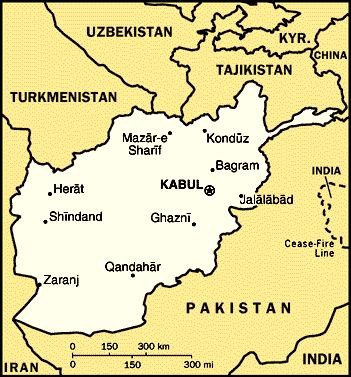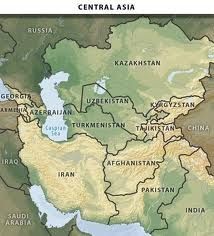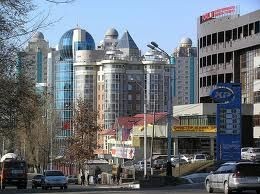Viewing results 1 - 6 of 85
DUSHANBE (TCA) — Two projects that aim to address fragility risks and increase social resilience in Tajikistan’s vulnerable regions were approved on June 20 by the World Bank’s Board of Executive Directors. The grant financing of $30 million for the Rural Economy Development Project and $37 million for the Socio-Economic Resilience Strengthening Project were allocated from the International Development Association’s (IDA) Risk Mitigation Regime. The projects will be implemented in Tajikistan’s southern Khatlon region and eastern Gorno-Badakhshan Autonomous Oblast (GBAO), which both border Afghanistan. Continue reading
KABUL (TCA) — Focusing on infrastructure development will help bring about long-term growth in Afghanistan and address persistent issues affecting the country’s economic prospects, apart from security, including poor connectivity, poor access to limited energy supply, and low agriculture productivity, says a new Asian Development Bank (ADB) report, released on April 3. Continue reading
ASHGABAT (TCA) — The Foreign Affairs Ministry of Turkmenistan, supported by the OSCE Centre in Ashgabat, on March 6 hosted in Ashgabat a meeting of the technical working groups on the Regional infrastructures Confidence Building Measures (RI-CBM) within the framework of the Istanbul Process on Afghanistan. During the meeting, representatives of the participating countries of the Istanbul Process and international stakeholders presented reports on the implementation of the Regional infrastructures CBM plan. Continue reading
TASHKENT (TCA) — Uzbekistan's Foreign Ministry says the head of the Taliban's political office in Qatar has expressed interest in cooperating with Tashkent in order to push Afghanistan's peace process forward, RFE/RL reported. A ministry statement issued from Tashkent on March 5 says Afghan Taliban co-founder Mullah Abdul Ghani Baradar also welcomed Uzbekistan's efforts to help build infrastructure in Afghanistan's energy, transportation, and education sectors. The statement followed a meeting between Uzbek Foreign Minister Abdulaziz Kamilov and Baradar in the Qatari capital, Doha, where Taliban representatives have been meeting with U.S. envoys as part of the Afghan peace process. The Uzbek Foreign Ministry said Baradar "noted that large infrastructural projects carried out by Uzbekistan will not only promote Afghanistan's economic development but will also create necessary conditions for starting a full-scale political process in this country." The ministry also expressed hope that Afghanistan might eventually become "a bridge of confidence and cooperation" between Central Asia and South Asia. The talks between Kamilov and Baradar were the highest-level official contacts between Uzbekistan and Taliban representatives. They follow a visit to Uzbekistan in August 2018 by Taliban negotiator Sher Mohammad Abbas Stanekzai. Afghanistan's government signed an agreement with Uzbekistan in 2018 to cooperate on building a 75-kilometer railway link from Uzbekistan's Hairatan border terminal to the northern Afghan city of Mazar-e Sharif. That project is expected to have significant economic impact on trade between the two countries because about half of Afghanistan's imports from Uzbekistan pass through Hairatan. The Asian Development Bank has estimated that the project will quadruple capacity at the border. Uzbekistan is also contributing $32 million to help Afghanistan build a 500-kilowatt power-transmission line between the village of Surkhan in southern Uzbekistan and Pul-e Khumri in the northern Afghan province of Baghlan. Uzbekenergo chief executive Ulgubek Mustafaev has said that the 260-kilometer stretch of transmission line will enable Uzbekistan to increase exports of electricity to Afghanistan by 70 percent. The Asian Development Bank has pledged $70 million toward the project, which is expected to cost about $150 million to complete.
ALMATY, Kazakhstan (TCA) — The International Finance Corporation (IFC), a member of the World Bank Group, and the Mayor’s Office of the City of Almaty on February 25 signed an agreement by which IFC will be supporting the municipality to access long-term capital and ramp up its investments in critical infrastructure. Continue reading
KABUL (TCA) — India and Afghanistan have signed agreements to implement 26 projects worth $9.5 million in Afghanistan amid a changing geopolitical scenario in the region. While the US has been urging India to send its armed forces to the war-torn nation, India has reiterated its commitment to complete infrastructure projects it has promised to Afghanistan, Russia’s Sputnik news agency reported. Continue reading





